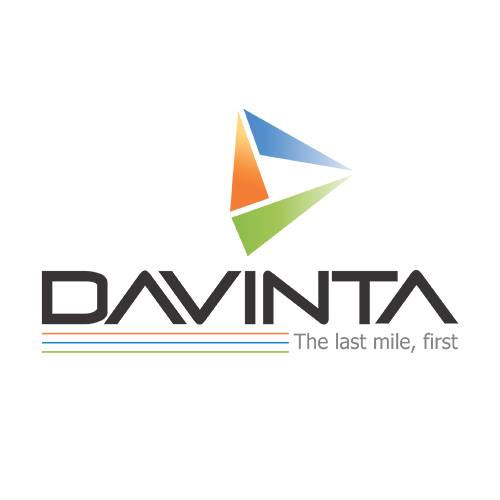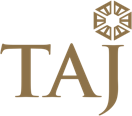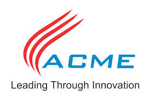Key components of Form 1120
Filing form 1120, the USA corporate income tax return form, is essential for all corporations establishing their business in the State. The form is to be used by all C corporations (including domestic corporations and businesses) to determine and report their corporate tax liability, income, and any profit or loss, including deductions or credits, irrespective of whether they are bankrupt or have a taxable salary or not.
Form 1120 is required to be filed and paid by the 15th of the fourth month after the corporation's year-end date as an estimated tax to the Inland Revenue Service (IRS). Certain types of Form 1120 are designed for some special business organizations according to the nature of the business, as provided below
- Form 1120-C is designed for cooperative associations like farmers’ associations to file their corporate tax returns for the year
- Form 1120-H is designed for residential real estate management systems, house-owners association
- Form 1120-L is designed for the companies engaged in providing the life and other insurance policies
- Form 1120-F is designed for foreign companies to file their corporate tax returns for the year
- Form 1120-S is designed for small corporations to report and calculate their profits and losses, tax deductions, and business tax credits for the year
- Form 1120-POL is designed for political organizations operating in the USA
- Form 1120-RIC is designed for regulated investment companies
- Form 1120-PC is designed for companies or businesses engaged in property dealings, offering casualty insurance, etc.
Who can file Form 1120?
Referring to the eligibility to file Form 1120, all domestic business entities or companies, unless exempted under section 501 by the IRS, are free to file the corporate income tax return form. The list of exempted organizations includes charitable organizations, social welfare organizations, social clubs, trade associations, labour organizations, and Veterans' organizations.
The list of eligible institutions or organizations includes the following business structures
- Domestic legal entities or businesses that elect to be taxed as a corporation or association along with Form 8832
- A Limited Liability Companies (LLC), which already filed Form 1065 and 8832 hence, elects to be treated as a corporation or association
- Corporations carrying the farming business
- Corporations holding interest in a Financial Asset Securitization Investment Trust (FASIT)
- A domestic disregarded entity wholly owned by a foreign individual or a foreign company
- Certain qualified opportunity funds with attached Form 8996
- A corporation holding certain qualified opportunity investments with attached Form 8997.
The deadline to file Form 1120
Unlike individual income tax returns, Form 1120 is a form for filing corporate income tax returns for corporations carrying their business in the USA. There are certain deadlines required for timely filing of the corporate tax return, which stands on the 15th day of the 4th month after the end of its taxable year-end. But, there are situations when
- Some corporations are willing to file a short-term corporate tax return- which must be filed quarterly after the end of the short period
- The corporations that have dissolved or are willing to dissolve their business- must file the corporate tax return on every 15th of the fourth month immediately after the dissolution of the business
- A corporation whose fiscal taxable year is short, ending on June 30th- must file the corporate income tax return on every 15th of the third month after the end of the taxable year
- If the due date for the filing and payment of the corporate tax return falls on Saturday, Sunday, or any other day of a legal holiday, it must be filed on the next business day.
- If the corporations or business entities of the USA are unable to file Form 1120 on time, they are eligible to request an extension of an additional 6 months by filing another Form 7004 specifying the ‘application for an automatic extension of the time to file certain corporate income tax, information, and other relevant returns’ before the original due date of filing the corporate tax return.
- If the corporate entities fail to time file the business tax return through Form 1120 by the due date and relevant extensions (if any)- a penalty of 5-25% of the unpaid tax for the month the filing is delayed, along with interest on unpaid tax liabilities is attracted according to the time for which the return is overdue.
Where to file Form 1120?
The business or corporate income tax return must be filed with the IRS through diverse modes like mail, including private delivery services (PDS), online portals, etc., depending upon the legal entities' structure and location.
The list provided below clarifies where Form 112 must be filed depending upon certain conditions
- If the principal corporation holds less than $10 million in assets at the end of the tax year, along with failure to file the Schedule M-3, then Form 1120 must be filed with the Internal Revenue Service Officer working under the aegis of the Department of the Treasury
- If the principal corporation holds more than $10 million in assets at the end of the tax year or if it holds less than $10 million in assets along with the filed Schedule M-3, then Form 1120 must be filed electronically or with the Internal Revenue Service Officer working under the aegis of the Department of the Treasury
- A corporation holding assets of any amount must file Form 1120 under the guidance of the IRS Center, the Department of Treasury
- If a corporation is operating its business from a foreign country or the territory of the USA with any amount of asset holding at the end of the tax period, it must file Form 1120 with the Internal Revenue Service Center operating in Utah
What is the procedure for filing Form 1120?
Form 1120 is a 6-page comprehensive form or document attracting various steps to process the completion and filing of Form 1120. The well-established procedure for filing Form 1120 is as provided below
Step 1: Choose the mode of filing Form 1120
The first step is choosing the mode of filing Form 1120, i.e., whether filing the form through the IRS online portal or mailing the filled and completed form to the provided address.
Step 2: Prepare a list of documents/information necessary for filing Form 1120
The second step mandates the corporation or the entities to prepare a list of documents or pertaining information for filing Form 1120. The necessary information includes
- The true and complete name and address of the corporation
- EIN, i.e., the Employer Identification Number of the corporation, and if the corporation has applied and waiting for the EIN, then the 'applied for' must be mentioned in the form
- Amount of total asset holdings of the corporation
- Date of incorporation of the legal entity
- Details of the corporation's gross income, except for income derived from qualifying shipping activities. The gross income includes- gross receipt of sales, cost of goods sold, any taxable interest, royalties earned, gross rents (if any), dividends, and other inclusions.
- Tax deductions for corporations, including compensation of officers, salaries, and wages paid the tax year, cost of repairs and maintenance, rents, other taxes, licenses, and charitable contributions, etc. (varies from company to company)
- Capital gains (if any)
- Refundable business tax credits (if applicable), etc.
Step 3: Complete the schedules attached
The next step requires filling up the information requested in the schedules, such as
- Schedule C on page no. 2 requires filling out the relevant columns for the dividends, inclusions, and any special deductions (if any);
- Schedule J on page no. 3 requires filling out the calculated and computed numbers for taxes in Part I and addressing the amounts for payments and refundable credits as specified in Part II;
- Schedule K on pages 4 and 5 requires the fulfilment of other relevant information pertaining to the use of the accounting method, the business activity code no., details of the corporation, etc.;
- Schedule L asks for recreating the balance sheets of the company agreeing with the corporation's books and records describing information with respect to the assets and liabilities of the corporation at the beginning and end of the year;
- Schedule M-1 and M-2 help explain any difference between our statements for book and tax purposes.
Step 4: Review other relevant schedules
The next step is to review and fill out forms like Form 1125-A, Form 4797, Form 1125-E, and other schedules like Schedule D according to the structure and the nature of the economic activities carried out in the corporation.
Step 5: Review and submit Form 1120
The next and last step is to consult an authorized tax team and comply with the relevant steps that need to be followed after the completion of Form 1120, including the signature of any authorized agent of the corporation like the president or vice president, or treasurer or the assistant treasurer or any chief accounting officer, etc.
Lastly, the corporation needs to submit the form to the IRS before the deadlines as provided, through virtual mode and download the receipt or invoice showing the overview of the calculated fees that need to be paid. Hence, the procedure for filing Form 1120 is complete.
Why choose us for filing Form 1120?
IRS form 1120 is an essential task for filing and reporting the income, losses, deductions, and relevant credits to calculate the C-corporations' tax liability. We at Enterslice provide a complete package to simplify the tricky process of Form 1120 submission in the USA. The services at Enterslice include
- Professional accounting services with chartered accountants and company secretaries
- Standby support or customer assistance
- Assistance in check listing the relevant documents
- Aids in the interpretation of the documents and business information
- Aids in preparing foreign subsidiaries’ finances
- Explores other tax credits
- Time-effective filing of form 1120.

 (+1) 6292766228
(+1) 6292766228




























